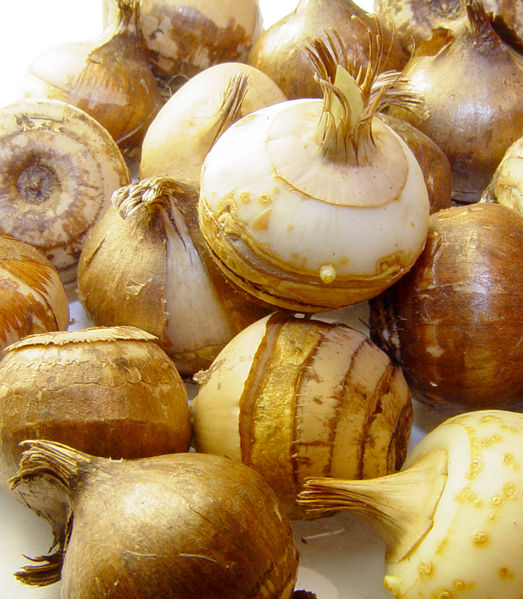Reproduction:
Independence is a Gift
Due to saffron being a vascular plant, it is a sporophyte dominant plant, meaning that it is dominantly diploid. However, even though this organism should be characterized as a vascular seed-bearing plant since it is an angiosperm, saffron is for the most part a sterile plant, which means that it can’t reproduce through seed production (sexual reproduction). This is because the seeds it produces are not fertile. The reasoning for mostly only carrying out asexual reproduction is because C. sativus is so highly specialized and well adapted to its environment, that it is easier to continue to pass down the exact same DNA to its offspring since it does not need to adapt or change to suit the environment that it lives in currently.

Therefore, the saffron crocus has to reproduce via corms. A corm, much like bulbs of tulips, are a top shaped structure that is planted underground instead of seeds. From this mass of cells, the saffron plant can grow and then take "breaks" underground by continually living through the corm structure. The original corms tend to grow buds of smaller daughter corms through asexual reproduction. These buds can be cut off and replanted to start a new plant, or by taking a piece or clove out of the crocus corm, can also produce a new plant when planted.
However, under very rare circumstances, when the plant needs to change its DNA to have new traits within the organism to sustain living in new conditions, saffron can undergo sexual reproduction. This form of sexual reproduction is called pollination, which is when the pollen (sperm) from the stamens are brought to the style of the plant, where the ovaries are present.
Continue to Interactions to read about what types of organisms saffron interacts with.
Return to Homepage Go to MultipleOrganisms.net
